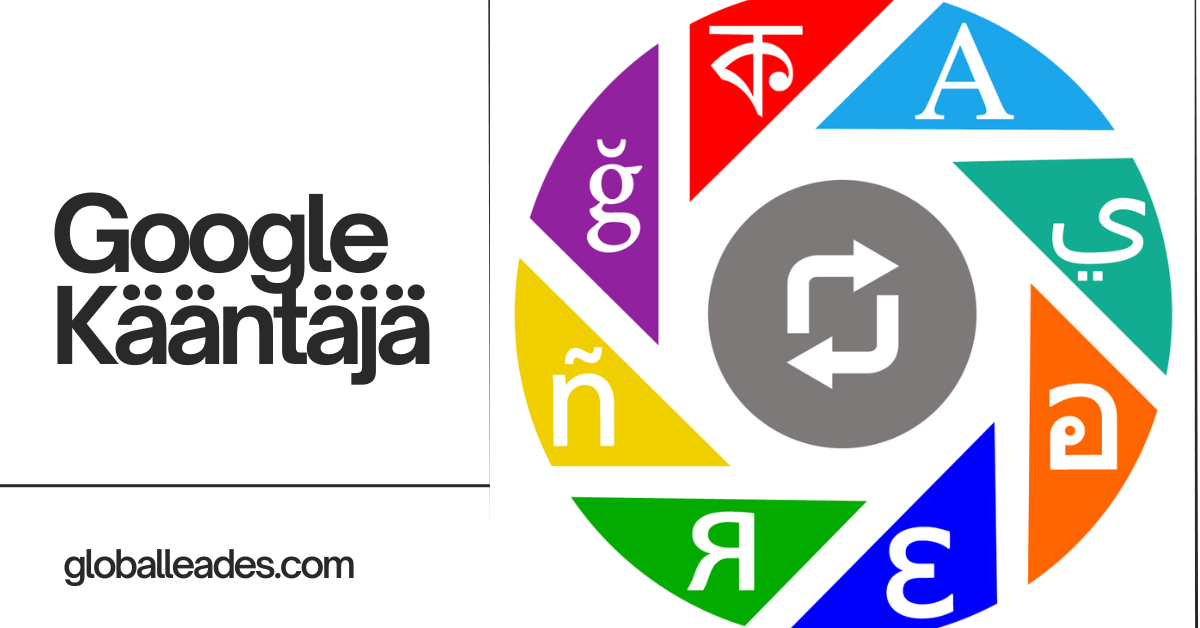In today’s interconnected world, effective communication is paramount, yet language barriers often hinder seamless interaction. Enter Google Translate, a groundbreaking tool that has transformed the way we bridge linguistic divides.
With its intuitive interface and advanced features, Google Translate has become a staple for millions of users worldwide. From travelers navigating foreign lands to professionals conducting business across borders, Google Translate offers unparalleled convenience and accessibility.
In this comprehensive guide, we will delve into the depths of Google Translate, exploring its evolution, functionality, and real-world applications. Join us as we uncover the power of language translation and its transformative impact on global communication.
What is Google Kääntäjä?
Google Kääntäjä, or Google Translate, is a free online translation service developed by Google. Launched in April 2006, Google Translate aims to facilitate communication across languages by providing instant translation of text, speech, and images.
With support for over 100 languages, Google Translate has become an indispensable tool for individuals and businesses alike. Whether you’re deciphering a foreign menu, translating documents, or communicating with international colleagues, Google Translate offers fast, reliable, and accessible translation services at your fingertips.
Understanding the Basics of Google Kääntäjä
At its core, Google Kääntäjä operates on sophisticated algorithms powered by artificial intelligence and machine learning. These algorithms analyze vast amounts of multilingual data to generate accurate translations.
By considering context, grammar, and syntax, Google Translate produces translations that are both fast and reliable.
Also Read: Käätjä – The Evolution of Translation In 2024
Whether you’re translating a single word or an entire document, Google Translate leverages its advanced technology to break down language barriers and facilitate cross-cultural communication.
The Evolution of Translation Technology
The evolution of translation technology has been marked by significant advancements in accuracy, speed, and functionality.
From the early days of rule-based translation systems to the emergence of neural machine translation, translation technology has undergone a remarkable transformation. Google Translate has been at the forefront of this evolution, continually refining its algorithms to improve translation quality and expand language support.
As technology continues to evolve, we can expect translation technology to become even more sophisticated, paving the way for seamless cross-linguistic communication.
Google Kääntäjä Features
Google Translate offers a plethora of features designed to cater to diverse translation needs, making it a versatile and indispensable tool for users worldwide.
Let’s delve into some of the key features that distinguish Google Translate and enhance its functionality:
- Text Translation: Translate words, phrases, or sentences instantly.
- Camera Translation: Translate text in images using your device’s camera.
- Speech Translation: Translate spoken conversations in real-time.
- Offline Translation: Download language packs for translation without internet access.
- Conversation Mode: Translate two-way conversations in different languages.
- Handwriting Recognition: Input text by writing characters on the screen.
- Dictionary: Get definitions, synonyms, and usage examples for translated words.
- Phrasebook: Save frequently translated phrases for easy reference.
How Does Google Translate Work?
Google Translate operates on a simple yet powerful principle: input text in one language, and receive a translation in another.
Behind the scenes, complex algorithms analyze the input text, taking into account context, grammar, and syntax to generate accurate translations. With the advent of neural machine translation, Google Translate has achieved remarkable accuracy, rivaling human translators in many cases.
Also Read: Kääntäminen – Understanding the Basics of Translation In 2024
By leveraging the power of artificial intelligence and machine learning, Google Translate continues to push the boundaries of translation technology, making cross-linguistic communication more accessible than ever before.
Pros and Cons of Using Google Kääntäjä
Pros of Using Google Translate:
- Accessibility: Available for free across various platforms, including web browsers and mobile apps.
- Multilingual Support: Translates over 100 languages, making it versatile for diverse translation needs.
- User-Friendly Interface: Easy-to-use interface with intuitive features for seamless translation.
- Real-Time Translation: Provides instant translations for text, speech, and images.
- Offline Mode: Allows downloading language packs for translation without internet access.
- Regular Updates: Google continuously improves the translation quality and adds new features.
- Integration: Can be integrated into other Google services and third-party applications for enhanced functionality.
- Community Contributions: Users can suggest translations and provide feedback to improve accuracy.
Cons of Using Google Translate:
- Accuracy Limitations: May produce inaccurate translations, especially for complex or context-dependent content.
- Language Nuances: Struggles with preserving the nuances, idioms, and cultural context of languages.
- Privacy Concerns: Translated content may be stored by Google for data analysis, raising privacy issues.
- Lack of Human Touch: Lacks the human touch and understanding needed for sensitive or nuanced translations.
- Limited Offline Functionality: Some features may not work in offline mode, restricting usability in certain situations.
- Dependency Risk: Overreliance on machine translation may hinder language learning and communication skills development.
- Inconsistency: Quality and accuracy may vary across different language pairs and contexts.
- Vulnerability to Errors: Automated translation algorithms are prone to errors, leading to mistranslations and misunderstandings.
How to Use Google Translate?
Using Google Translate is straightforward and intuitive. Users can access Google Translate through the website or mobile app, where they can input text manually, speak into their device’s microphone, or upload images for translation.
With its user-friendly interface and intuitive controls, Google Translate makes language translation accessible to everyone.
Also Read: превоодач – Mastering the Art of Translation
Whether you’re traveling abroad, conducting research, or communicating with colleagues, Google Translate offers a seamless and efficient way to overcome language barriers and connect with people around the world.
Tips for Optimizing Your Experience with Google Kääntäjä
To make the most of Google Kääntäjä, consider the following tips:
- Verify translations for accuracy, especially for complex or specialized content.
- Provide additional context to improve translation quality.
- Explore advanced features such as offline translation and conversation mode.
- Provide feedback to Google to help improve translation accuracy over time.
By following these tips, you can optimize your experience with Google Translate and make the most of its powerful translation capabilities.
Real-Life Applications of Google Kääntäjä
The applications of Google Kääntäjä are endless, spanning across various industries and use cases. From facilitating international communication to aiding language learning, Google Translate has become an indispensable tool for individuals and businesses alike.
Whether you’re traveling abroad, conducting research, or communicating with colleagues, Google Translate offers unparalleled convenience and versatility.
Also Read: Käämtäjä – Know The Importance In 2024
With its advanced features and intuitive interface, Google Translate empowers users to overcome language barriers and connect with people around the world.
The Future of Google Kääntäjä
As technology continues to evolve, so too will Google Kääntäjä. With advancements in artificial intelligence, machine learning, and natural language processing, we can expect Google Translate to become even more accurate and versatile in the years to come.
As language barriers continue to dissolve, Google Kääntäjä will play an increasingly important role in fostering global communication and understanding.
With its commitment to innovation and accessibility, Google Translate is poised to shape the future of cross-linguistic communication in profound ways.
Conclusion
In conclusion, Google Kääntäjä has transformed the way we communicate across languages, breaking down barriers and fostering global understanding.
From its humble beginnings to its future potential, Google Translate continues to evolve, offering fast, reliable, and accessible translation services to millions of users worldwide.
As we look ahead, the future of Google Kääntäjä shines bright, promising to empower individuals and businesses alike in the pursuit of seamless cross-cultural communication.
With its advanced features, intuitive interface, and commitment to innovation, Google Translate is poised to shape the future of language translation in profound ways.
FAQs
Can Google Translate accurately handle regional dialects and slang?
Google Translate struggles with regional dialects and slang due to its focus on standardized language. While it may provide basic translations, nuances and localized expressions may be lost.
Is Google Translate suitable for translating legal or technical documents?
Google Translate is not recommended for translating legal or technical documents where precise accuracy is crucial. It may mistranslate specialized terminology and fail to capture legal nuances effectively.
Does Google Translate offer real-time interpretation for live conversations?
Yes, Google Translate offers real-time interpretation for live conversations through its conversation mode feature. However, users should expect some latency and potential inaccuracies, especially with complex discussions.
Can Google Translate provide context-based translations for ambiguous phrases?
Google Translate’s context-based translation capabilities are limited, and it may struggle with ambiguous phrases. Users should provide additional context or manually refine translations for better accuracy.
Does Google Translate prioritize formal or informal language in translations?
Google Translate tends to provide translations in a neutral or formal tone by default. It may not always reflect the informal or colloquial language used in casual conversations or informal contexts.
Is there a limit to the length of text that Google Translate can handle?
While Google Translate can handle large volumes of text, there may be practical limits to the length of text for optimal translation accuracy and performance. Users should consider breaking down lengthy texts for better results.
How does Google Translate handle languages with complex scripts or characters?
Google Translate supports languages with complex scripts or characters, but it may encounter challenges with rendering and displaying certain scripts accurately. Users may experience formatting issues or inaccuracies in translations for such languages.




